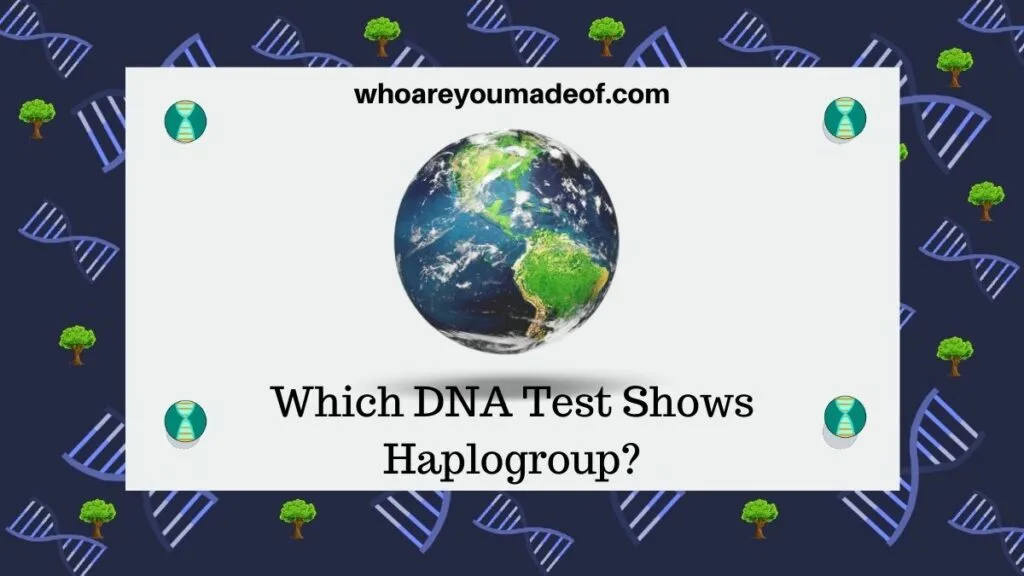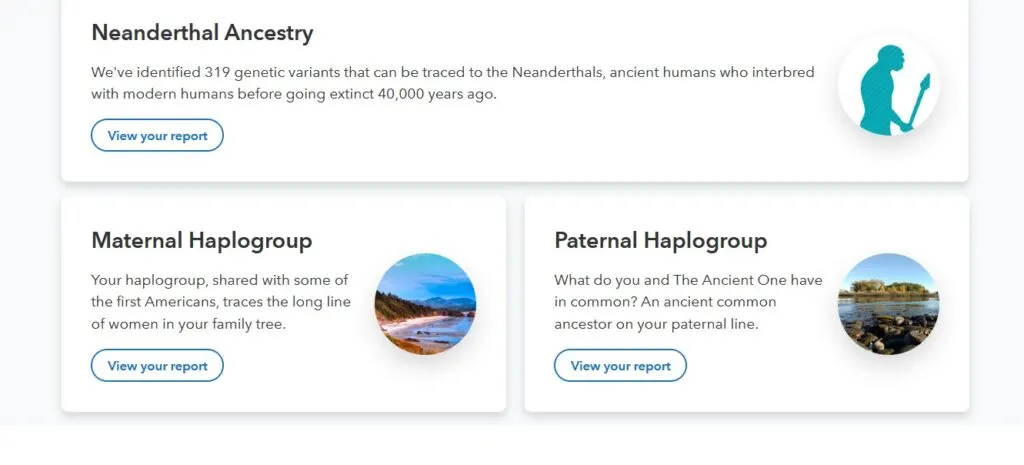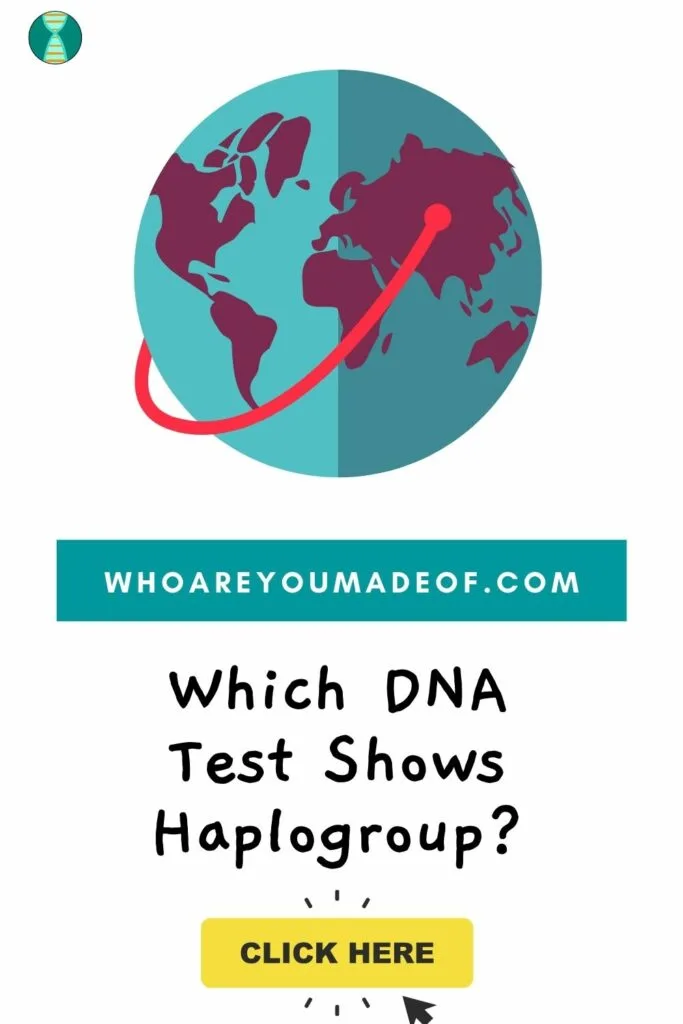Do you want to know which popular DNA test shows your haplogroup? Here, learn the answer, who should take the test, and what to expect from your haplogroup results.
Haplogroup tests are among the oldest and most reliable types of DNA testing, and there is a lot that the results can reveal. You might be able to determine where your direct-line paternal or maternal ancestors lived thousands of years ago, or find out that you share a haplogroup with a historical figure.

My favorite part about haplogroup results is that they come automatically included with one of the most popular DNA tests on the market today. This means that along with all of the "regular" DNA results (like DNA matches and the ethnicity estimate), you can also discover your haplogroups with this test.
Which DNA test can tell you your haplogroup?
The DNA test that can tell your haplogroup is the 23andMe Ancestry + Traits Service, which is usually available directly on the 23andMe website for about $99. 23andMe test results include your mitochondrial DNA (mtDNA) and Y-DNA haplogroups, along with many other features.
It is important to note that only males have Y-DNA, so females will not receive Y-DNA haplogroups unless their father or brother also take the 23andMe test. Both males and females have mtDNA.
Males inherit their Y-DNA from their father, who inherited it from his father, who inherited it from his father. Males and females inherit their mtDNA from their mother, who inherited it from her mother, who inherited it from her mother.
In other words, females will receive one haplogroup in their 23andMe results, and males will receive two. This is in addition to all of the other features that come along with 23andMe results.
Who should take DNA test for paternal haplogroup (Y-DNA)?
If you are a male, then you will receive a Y-DNA haplogroup on your 23andMe results. Your haplogroup should be identical to your father's haplogroup, as well as any brothers that you may have that share the same father.
Even though females do not have Y-DNA, they can still learn from a close male relative's Y-DNA results. For example, if a female's father or brother can take the test, then the female can learn from those results.
In fact, 23andMe has a feature that allows users to share their DNA results with each other. Females can use this feature to connect their profiles to a father or brother in order to populate the Y-DNA results.
If no father or brother is available to take the DNA test, a paternal cousin who is descended from an uncle can also help female relatives learn about their father's Y-DNA haplogroup.
Who should take DNA test for maternal haplogroup (mtDNA)?
Since everyone, both male and female, has mtDNA that they inherited from their mother, everyone will recieve a mtDNA haplogroup on their 23andMe results. We can use our mtDNA haplogroup to learn about our direct-line maternal ancestors going back thousands of years.
If you are interested in comparing your mtDNA haplogroup to other people who share your direct-line maternal ancestors, then you could the following close relatives to see if they would be willing to do a 23andMe test, too:
- Male and female siblings
- Male and female first cousins who are the children of your mother's sisters
- Your mother's brothers and sisters, as long as they share the same mother
Example of Y-DNA and mtDNA haplogroup results
When you first log in to your 23andMe results, you should visit the Ancestry and Traits Overview page. Below the Neandarthal Ancestry report, which is also very interesting, you will find the overview related to your Maternal and Paternal haplogroups.
Below is an example of this overview from my husband's 23andMe results. He has Native American mtDNA and Y-DNA haplogroups, and this is indicated right here on the overview:

If you click on the "View your report" button under the Maternal or Paternal section, you will be taken to a brand-new page with more in-depth details about the science behind your results, as well as migration patterns that led to the development of your haplogroup.
On my husband's Paternal Haplogroup results, we can see that the name of his Y-DNA (paternal) haplogroup is Q-M3:

Amazingly, there have been genetic studies of ancient human remains that have been discovered around the world. This is how 23andMe can tell my husband that he and The Ancient One, who is also sometimes referred to as the Kennewick Man, share a direct-line paternal ancestor.
This means that if my husband could trace his father's father's father's (etc...) line directly back for thousands of years, he would eventually connect with The Ancient One's direct paternal line. Fascinating!
My father, who has primarily European ancestry, also had some pretty neat paternal haplogroup results. We discovered that he has the paternal haplogroup R-L2, which he shares with Niall of the Nine Hostages, an ancient Irish king.
I wonder what yours will reveal?
There is plenty more to see on the results page, such as maps explaining how your haplogroup was formed from its parent group, and the migration routes that your direct maternal and paternal ancestors took after their migration out of Africa many tens of thousands of years ago.

Conclusion
I hope that this post has helped you understand which DNA test (23andMe for the win!) can give you your haplogroups, and what you can expect to learn.
If you have a question about haplogroups, I'd love to hear from you in the comments!
Thanks for reading this post today.


Walter Weaver
Saturday 6th of April 2024
Can I upload my DNA test results to other companies to enable them to compare it to their results looking for possible matches?
Mimi Mari
Thursday 19th of December 2024
@Walter Weaver, yes. MyHeritage allows it. You start on the Ancestry.com or 23 and me, etc. from their site you download your results and then you go to the MyHeritage website and upload the results. This will give you a lot of matches, particularly in Europe. And other NON USA countries it will also tell you what your Y-DNA - only biologically born men. In other words, your father‘s father‘s father I discovered my surname we’ve been using all these years was not correct traced it back to my great grandmother, who apparently had a liaison of some sort and the person named on my grandfather‘s birth certificate is not his biological father. I learned this through suspicions because none of our matches on the other test I’ve done match to our surname, which caused me suspicion I asked my brother to take the test to confirm it and all of his matches are to the same name or a variation of that name which is nothing even close to ours. I’ve been traced it back to a family who lived in Ontario, who came over three years before my grandfather was born and live in the same region most likely it’s him, but he has no biological sons other than my grandfather presumably so it’s not possible to absolutely confirm it was him and not one of his 7 brothers or their sons who also immigrated to Canada from UK, but none of them lived in the same province as my great grandmother and her son (my grandfather). I would have to do a lot of research to find out who all of his brothers were and if any of them had sons and grandsons but must be directly up the MALE LINE OF DECENDENCY. GED MATCH IS ALSO ONE THAT WILL ALLOW YOU TO DO IT BUT IT’S A VERY DETAILED STATISTICALLY DRIVEN PROGRAM CAN BE SOMEWHAT CONFUSING. I DON’T KNOW IF IT GIVES YOU THE HALF A GROUP OR NOT BUT BUT THEY HAVE NO PROVISIONS. In other words, law-enforcement frequently uses this to match cold case murder & sexual assault investigations, again last I checked, there was not an option to opt out of law-enforcement access, where is all of the other programs give you the choice to opt out of law-enforcement and sharing and they’re not allowed to use any ANCESTRY information in their case WORK, because it’s a public forum. However, it’s not a direct line back to this person. It’s a very complicated and tedious process. They have to build a Family Tree about the suspect and then start back tracing and then forward tracing so it is time-consuming and laborious and it’s not just like push a button and you know who the murderer was there’s a lot involved and then they have to get a subpoena if they can provide enough proof for Judge to sign off and compel the suspect to comply with a DNA test to either prove or eliminate that person as a suspect. So it’s not a magic wand, but I am of the opinion that you can do this very easily with very little information even without the assistance of a DNA test anyway and if you have committed a crime like this you most likely deserve to be arrested and most importantly even if a very distant relative on either your mother or father side has committed a murder or sexual assault it can and often does lead directly back to you even without your DNA being in the database. I’ve transferred all my information from Ancestry.com and 23&Me to my Heritage and GED Match. There may be others now, but 23 and me also gives you your haplogroups but their match is more distant than the one you get through my heritage if that makes sense to you. *Do NOT like 23 and me for too many reasons to list. Mimi
Ginger
Monday 15th of August 2022
So I can't get my Paternal haplo group through any males cousins through my Aunts. I have no males great grandfather, grandfather, father or uncles only Aunts left no uncles survived long enough to have any children. My dad died in Vietnam when I was 2 and I was the only child. I think my grandfather had 1/2 siblings if the stories are true about great grandmother and his real father.
Jess
Sunday 7th of February 2021
Hello. I (female) am interested in both haplogroups. My father died young and I am an only child, as was he. He does habe several uncles, and 3-half maternal sisters. Would his uncle's dna be of any use, or am I out of luck? Thank you!
Jeff Cuttell
Wednesday 9th of November 2022
@Jess, I don't know if anyone ever replied. If your Father has an uncle, still alive, you can find out your Y-DNA Haplogroup from them. This is because your Father's uncle would be the son of your Father's paternal grandfather. If your father's uncle has died, but they had a son (who would be your father's cousin) then you would share their Y-DNA Haplogroup. If they have also died, but had a son, you would share their Y-DNA Haplogroup also. It's a question of going back to find a point where two lines of male offspring come together. Does that help? Of course - this may be old news for you, by now. Happy hunting!